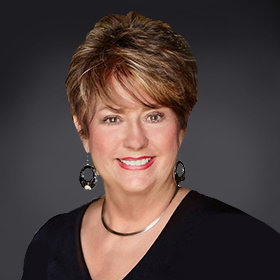We stand by the story, reporter
November 20, 2013Jindal in shadows of Louisiana’s flood rate fight
November 20, 2013It’s difficult for me to imagine that I have memory of anything that occurred 50 years ago. But then, when I look in the mirror I still see a 16-year-old’s hair and features so I am no judge.
But this year, along with a lot of other folks, my thoughts are on the events of Nov. 22, 1963. I was in 1st grade at PS 152 in Woodside, Queens and when my mom picked me up in the old Buick that was just a car then but a vintage automobile now, there were tears in her eyes and a lot of other grownups were sad, too.
“Mommy, what’s wrong?” I asked.
“Some snake-in-the-grass shot our president and killed him,” she said.
In my child’s mind flashed an image of a green snake crawling up to John F. Kennedy, rifle sidling with him, through green grass. I remember it well.
That, and my younger sister and I being disconsolate because the next day we couldn’t watch our Saturday morning cartoons. There were news people talking and there was film of Kennedy talking, and there were shots of a flag-draped casket in the East Room of the White House.
The vinyl 33-rpm record of Kennedy speeches, purchased by my mom the night of the assassination, offered little comfort, but goes to show that even 50 years ago capitalism – as now – wastes little time capitalizing on tragedy. They got my mom’s five bucks.
A man I count as one of my very best friends today had a closer encounter, however.
Robert Walker, who lives in Houma now and is five years my senior, was in Dallas on Nov. 22, in school, and he remembers the announcement over the school loudspeaker but little else about that day, other than the recognition that he was in the city where one of the most significant events of the 20th Century occurred.
There were disconsolate emotions of a different sort in his house that night. Bob’s father, a draftsman named Donald Walker, was beside himself.
“He loved Kennedy,” Bob recalls. “When he got home he was ranting and raving.”
Bob didn’t care much about weekend cartoons, being a big kid of 12, and on Sunday, Nov. 24, was doing one of the things he loved doing, which was walking around downtown Dallas.
He loved watching the people and seeing the sights, and this day was no different. He was aware of the tragedy that had occurred but it had little to do with his day. The family had not lived in Dallas very long, so there was a lot to discover.
One of the new discoveries Bob made had to do with the television trucks that were circled around the Dallas Police headquarters. He had never seen this kind of equipment and so he stayed near this television van, drinking in whatever the people inside were doing.
What he didn’t know was that the man attributed with the stopping of a nation’s heart was not far away, in the police building, and that this was why there were such strange goings on.
Lee Harvey Oswald was being escorted through a garage area of the headquarters amidst a sea of police officers. A man named Jack Ruby – born Jack Rubenstein – was mingling with the cops.
Bob heard a pop, something like an explosion, echoing from a building nearby, and suddenly people were running everywhere.
With all these adults running all over the place, Bob figured it wasn’t a good place to be and so he walked away, heading back home, and it wasn’t until later that he saw – and learned of – what so many people had seen live on their televisions.
Jack Ruby had killed the man charged with killing the president, his silencing of Oswald plunging the nation even deeper into a vortex of conspiracy theories that persist now, 50 years later, with no resolution in sight.
The Kennedy assassination had a direct effect on Bob. Donald Walker could not stand to continue living in the place where his beloved president had been killed, and within three months the family was gone, headed for Florida, where he got a job working for a company that did contract work for the U.S. space program. What followed for Bob in years to come was tremendous interest in the pet Kennedy project that his father became involved with. In the years to come, even after moving to Louisiana, he would drive many miles to witness space shuttle lift-offs, himself having built a career in the oil and gas industry.
“It was a moment in history that I half-assed witnessed,” Bob now says, reflecting on his Gumpian brush. “I just happened to be at a place where history was happening and didn’t realize it. Then we moved to Cocoa Beach, and so I got to watch the space program and I guess with that I got to see more history being made.”








